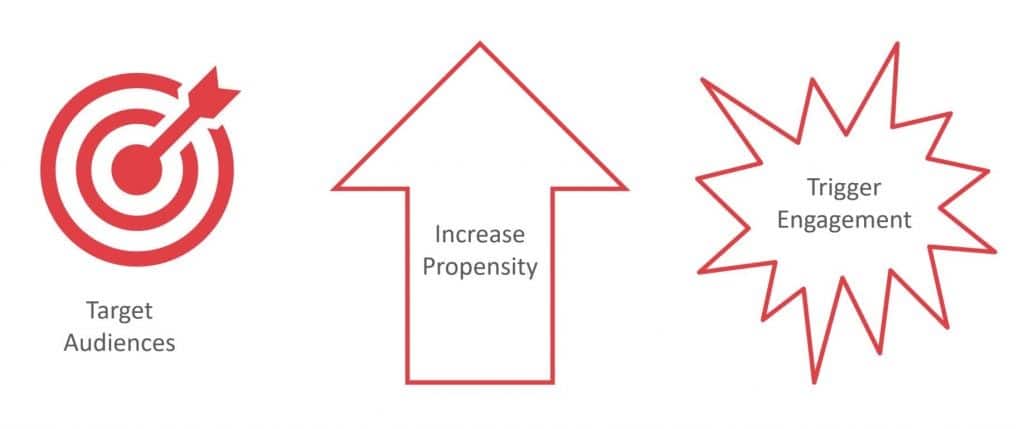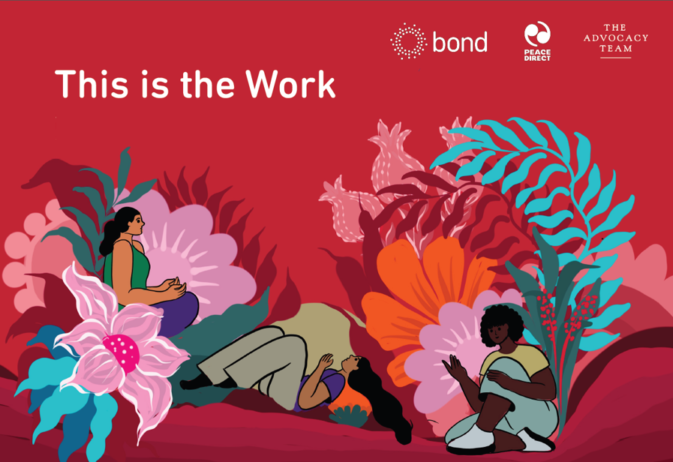3 steps to delivering engaging communications
Where possible, I like to keep things simple. Sifting through audience insight and delivering complex projects can be daunting, but broken into bite-size chunks such projects become easier to approach.
In the international development sector we have access to lots of insights through the combined experience of the sector’s staff and in individual organisations’ audience research. But sometimes it can be difficult to see the wood for the trees. There’s so much insight available, it’s hard to know where to start and how to put it all into action.
Here are three steps as a simple way of approaching the development of a strategy, thinking about a particular project or campaign, or creating a piece of communications.

1. Target audiences
As a communicator you always want to start by understanding your audiences and determining what factors are going to encourage and trigger their engagement. Always start your insight gathering and communication strategising by thinking about who you are seeking to engage. You will want to know who they are, their demographics, their social circumstances, the media they consume, their attitudes to global poverty and, if you know, their perceptions of your organisation. The behavioural segmentation which you can see on the “audience” section of DevCommsLab is a good place to start.
2. Increase propensity
Audiences generally want to engage with a particular call to action, issue or form of messaging. In order to increase engagement, we need to focus efforts on increasing the audience’s propensity to engage.
Propensity is partly determined by the attitudes people hold about your charity and your cause, but also by other factors which don’t on the face of it appear to relate directly. For example, we have found that increasing the sense that you can make a difference in politics and public life drives greater engagement with global poverty. For more on the underlying attitudes which drive engagement check out this blog.
As communicators, we can help shape propensity to engage, but we aren’t the only factor. Media reports, friends and families, previous experience and a multitude of other factors shape people’s perceptions and attitudes – we need to account for these in our strategies.
Subscribe to our newsletter
Our weekly email newsletter, Network News, is an indispensable weekly digest of the latest updates on funding, jobs, resources, news and learning opportunities in the international development sector.
Get Network News3. Trigger engagement
We need to put the right stimulus in front of an audience which directly makes them do something. This might be a call to action, but it doesn’t have to be. The Aid Attitudes Tracker research identifies the information sources which directly lead to making a donation: 32% of donors said TV/ News Coverage while only 7% said Sponsorship Request and 5% Advertising.
The example of Share a Coke
The Share a Coke campaign, which started in Australia, perfectly illustrates these three steps in action. It’s worth checking out the Ogilvy campaign review to understand the thinking behind the campaign.

- Coke’s audience research showed that 50% of Australian teens and young adults hadn’t tasted a Coke in the last month and the drink had lost its “cool” factor. This gave the campaign a target market.
- Coke also identified that this audience’s propensity to engage would be improved by changing the way that they identified with the brand, to see it as a “must have”, a gift, or something to share. This was the insight behind the change in packaging which put customer’s names onto the bottles and cans.
- Finally, Coke and Ogilvy put into place mechanisms to trigger more sales: giving consumers the opportunity to get their own names printed onto cans in 18 of Australia’s top shopping centres, putting their names up on interactive advertising at key Australian locations, and encouraging people to buy for one another at point of sale.
In three months consumption of Coke among young people went up in Australia by 7%, the campaign generated 12 million media impressions, won 7 Cannes Lion awards, and has been rolled out to nearly 60 markets internationally. Developed off the back of a 151 word brief, it is a great example of a simple campaign concept which identified an audience, improved propensity to engage by changing underlying attitudes about the brand, and then triggered engagement through great communications and experiences.
Take the time to follow all the steps
In my experience the second stage, increasing propensity, is often overlooked in international development communications. Stretched by an expanding to-do list and focusing on short term priorities, we tend to put our heads down and focus on targeting an audience and triggering them to act.
This blog has been cross-posted on the DevCommsLab. DevCommsLab is a site for people who want to play a part in improving public engagement with global poverty. You can find insights on the site which will help you to understand audiences, encourage people to take action, and influence people’s attitudes. You can keep up with the latest research, stories about organisations using insights, and opinions on the blog.
Category
News & viewsThemes
Communications



